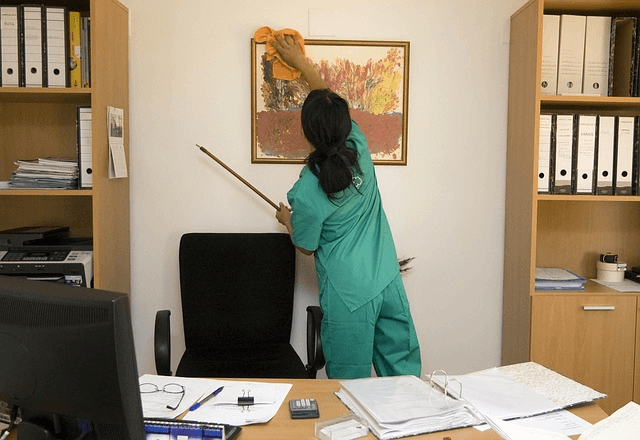In the hustle and bustle of daily life, a clean and well-maintained home is often considered a mark of success. It’s a source of comfort, pride, and organization. However, while we regularly attend to tasks like vacuuming, dusting, and scrubbing, there’s an often-overlooked aspect of home upkeep: the maintenance of our cleaning and maintenance strategy itself. Just as your home requires physical upkeep, so does the framework through which it is kept clean and functioning. A cleaning and maintenance strategy that is allowed to stagnate, become outdated, or slip into complacency can cause more harm than good over time. It can lead to inefficiencies, overlooked areas, and eventually more expensive repairs or replacements.
In this article, we will explore why the effectiveness of your cleaning and maintenance strategy needs regular maintenance and how staying ahead of potential issues can save you time, money, and stress.
1. Evolving Needs Demand Ongoing Attention
One of the primary reasons your cleaning and maintenance strategy requires maintenance is that the needs of your home are not static. They evolve over time due to a variety of factors, from changes in your lifestyle to the natural aging process of your home and its systems. Ignoring these shifts can result in an outdated routine that fails to address the most pressing concerns.
-
Changing household composition: If your household grows—whether due to a new baby, a pet, or additional family members—your cleaning routine will need to be adapted to accommodate new messes, allergens, and maintenance needs. What worked for a single person or a small family might not suffice for a larger household.
-
Wear and tear on systems: Appliances, plumbing, and electrical systems degrade over time. The refrigerator you bought five years ago might now have parts that need attention, or your HVAC system might require more frequent filter changes. Keeping your maintenance plan updated ensures these areas get timely attention before small issues become major repairs.
-
Lifestyle changes: If your work schedule or living habits shift, so too should your cleaning priorities. For example, working from home may necessitate more frequent deep cleaning of office spaces or communal areas like kitchens, while a change in diet could introduce new cleaning challenges (think of the additional grease if you start cooking more often at home).
Regularly assessing your home’s needs and adjusting your cleaning and maintenance strategy accordingly is key to keeping it functioning efficiently.
2. Preventative Measures Are More Cost-Effective Than Reactive Solutions
An often-quoted saying goes, “an ounce of prevention is worth a pound of cure,” and when it comes to home maintenance, this couldn’t be truer. Regular maintenance of your cleaning strategy not only keeps your home looking fresh and organized but also ensures that problems are addressed before they become expensive or disruptive.
When you neglect to maintain your cleaning and maintenance strategy, certain issues can go unnoticed until they escalate:
-
Clogged gutters: Regular gutter cleaning is a task that is easy to overlook until water backs up and causes damage to the roof or foundation. This simple task, if incorporated into a routine, can prevent water damage that could cost thousands in repairs.
-
HVAC neglect: Failing to schedule regular HVAC inspections or change air filters as needed can lead to inefficient heating or cooling, higher energy bills, and even the premature failure of the unit.
-
Stains and odors: Without a proper strategy in place to tackle spills or stains quickly, they can become permanent fixtures. For instance, a neglected carpet that has accumulated grime over time can lead to longer cleaning sessions or even the need for professional help. Having a plan for regular stain removal or fabric cleaning can prevent these issues from becoming entrenched.
By incorporating preventative measures into your maintenance strategy, you not only extend the life of your home’s various systems but also prevent the need for costly emergency repairs or deep cleaning.
3. Changes in Cleaning Products and Tools Demand Updates
Another key reason your cleaning strategy needs maintenance is the continuous evolution of cleaning products and tools. The market is full of innovations that make cleaning more efficient, environmentally friendly, and cost-effective. From multi-surface sprays to robot vacuums, there’s always something new that could potentially enhance your routine.
By maintaining a flexible approach to your cleaning strategy, you ensure that your home benefits from the latest advancements:
-
Greener cleaning options: As environmental awareness increases, many homeowners are turning to eco-friendly products. These range from biodegradable cleaners to energy-efficient appliances. If your cleaning strategy is not updated to include these, you may be missing out on products that are not only better for the planet but also for your health, as many traditional cleaning products contain harsh chemicals.
-
Technological advancements: Tools like robot vacuums, steam mops, and UV sanitizers are transforming the way we maintain our homes. Regularly reviewing your cleaning equipment and staying current with these innovations allows you to incorporate more efficient, time-saving tools into your routine.
-
DIY cleaning solutions: With the increasing popularity of homemade cleaning solutions using items like vinegar, baking soda, and essential oils, your strategy might benefit from a more cost-effective, sustainable approach. Regularly assessing the tools and products in your strategy ensures you don’t miss out on more economical or natural alternatives.
By maintaining a flexible, adaptive strategy that incorporates the latest tools and cleaning products, you can keep your home clean while saving time, money, and effort.
4. Maintaining Your Strategy Helps Prevent Burnout
Cleaning and home maintenance are never-ending tasks. When your strategy doesn’t evolve, or if it becomes too rigid or over-complicated, you may find yourself becoming overwhelmed and eventually burning out. Overloading yourself with cleaning tasks that no longer suit your home or lifestyle can lead to exhaustion and frustration.
An evolving cleaning and maintenance strategy allows you to prioritize the most critical tasks, delegate less important chores, and pace yourself effectively. For example, if your home has grown busier with children or pets, consider delegating tasks like dusting or vacuuming to other members of the household, or investing in cleaning services or tools that can ease your burden. When your strategy is regularly maintained, it becomes a realistic part of your life, rather than an overwhelming responsibility.
5. A Well-Maintained Strategy Increases the Value of Your Home
Finally, an often-overlooked benefit of maintaining an ongoing cleaning and maintenance strategy is the positive effect it has on your home’s overall value. Homes that are properly maintained are not only more pleasant to live in but also retain their value longer and can command a higher resale price.
For example, regular cleaning and maintenance of your appliances, flooring, and systems help them stay in good condition, which in turn ensures they perform optimally. Likewise, homes with well-kept exteriors, gardens, and interiors are far more appealing to potential buyers. A clean, organized home suggests to potential buyers that the property has been well-cared for, and that they won’t be facing hidden problems in the near future.
Furthermore, the maintenance of systems such as HVAC units, plumbing, and electrical components means fewer surprises during a home inspection, which can be a major selling point when trying to close a deal.
6. Creating and Maintaining Your Strategy: The Key Elements
A solid cleaning and maintenance strategy involves more than just performing regular tasks. It requires an ongoing commitment to review, adapt, and evolve your approach. Here’s how you can ensure your strategy remains effective:
-
Evaluate your needs regularly: Assess your home’s condition and needs at least every season. Are there new areas that need more attention, or tasks that need to be adjusted? Has anything broken or aged prematurely?
-
Incorporate flexibility: Your schedule should adapt to your lifestyle. Don’t hesitate to make changes as your home and family’s needs evolve.
-
Use technology: Tools like scheduling apps or automated reminders can help you stay on top of your routine. You can also track your tasks and note when certain systems or tools need maintenance or updating.
-
Get the whole family involved: If you share your home with others, make sure they are part of the strategy. Delegate tasks appropriately and ensure that everyone takes responsibility for keeping the house in order.
Conclusion: The Need for Ongoing Maintenance
A cleaning and maintenance strategy that isn’t periodically reviewed and adjusted risks becoming ineffective and inefficient. Maintaining this strategy ensures that you stay ahead of potential issues, that your cleaning tasks remain manageable, and that your home remains comfortable, healthy, and valuable. By adapting to changes in lifestyle, technology, and needs, you create a system that works for you, not the other way around. Through regular maintenance of your cleaning and upkeep schedule, your home will always remain a place of pride, comfort, and functionality—without the stress of last-minute scrambling or unaddressed problems.

